Technologies & Instrumentation
The High-Throughput Screening Shared Core has three Biomek FX robotic liquid handlers with exchangeable 96- and 384-pipette heads for standard HTS liquid handling, a Biomek Span-8, and an Echo 555 for selecting compounds or siRNAs of interest from screening plates (cherry-picking).
Echo 555
The Echo is also used to dispense compounds for both single- and multi-dose experiments to support HTS confirmation screening and SAR studies. The Echo 555 uses sound to dispense 2.5nl droplets of compound into assay plates.
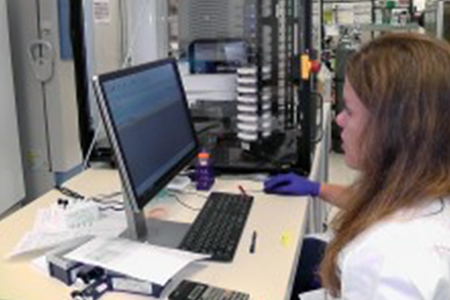
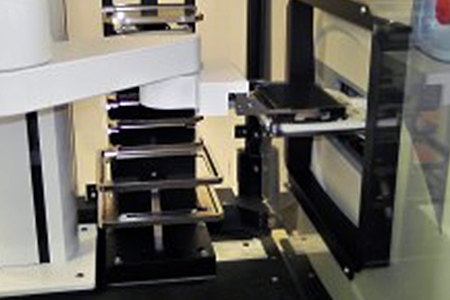
EnVision Multi-mode Readers
Three PerkinElmer multi-mode EnVision readers are available for quantitating light-based endpoint assays (fluorescence, luminescence, absorbance, and AlphaScreen) in 96- and 384-well plate formats.
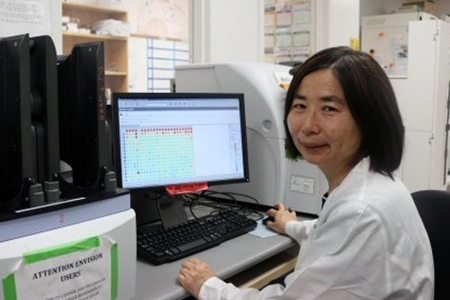
RapidFire 300 Readers
A RapidFire 300 reader is also available and uses mass spectroscopy to monitor the progress of enzyme-catalyzed reactions. This instrument is especially useful for enzymes that are difficult if not impossible to assay using conventional HTS assays.
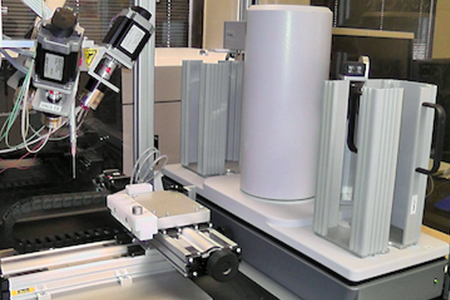
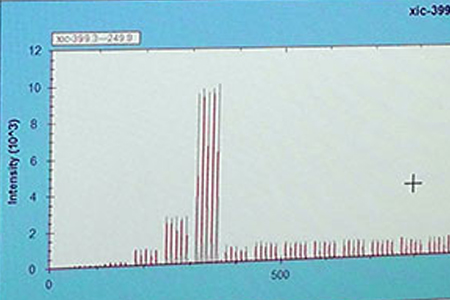
INCell Analyzer 6000™
The HTS Core operates a INCell 6000 (GE Healthcare, Inc.) automated microscope for high-content, image-based screening of 96- and 384-well plates. To date, the HTS Core has implemented assays to measure calcium kinetics, mitochondrial health, mitotic index, cell proliferation, DNA damage and repair, cytoplasmic and nuclear translocation, neurite outgrowth, and cell migration.
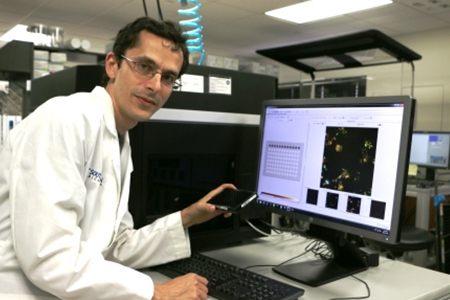
BioMicroLab XL100
A BioMicroLab XL100 is used to handle 1-dram vials submitted by chemists for testing or for incorporation in the HTS chemical library. This instrument transfers compound samples from these vials to 2D-barcoded Matrix tubes for storage and cherry-picking. It has an onboard decapping tool, a four-place Satorius balance, and a 2D barcode reader. 2D and 1D barcode readers are used to read entire racks of Matrix storage tubes (96 tubes per rack) and the rack 1D barcodes, respectively.
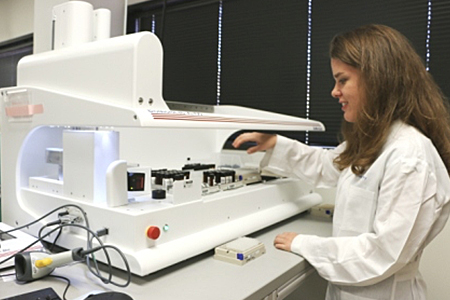
Additional Equipment
The laboratory has a BioTek EL406 plate washer/dispenser, three BioTek MicroFlo and four MultiFlo liquid handlers, two Agilent Plate-Loc plate sealers, two barcode printers, and two Apricot (96/384 well) pipettors. The lab has standard cell culture equipment (four tissue culture hoods, two Olympus microscopes, a Bio-Rad cell counter, three Eppendorf 5810 centrifuges) and sufficient incubator space (18 CO2 incubators) to support about seven concurrent cell-based screens and the associated maintenance cultures. Two monitored, cryogenic storage units (Thermo Fisher) house mammalian cell banks.
Software Programs and Database Systems
The HTS Core uses several software programs and database systems to track chemical and RNAi inventory and to analyze, store, maintain, retrieve, and visualize data and information accumulated by screening projects. Current platforms include Core Informatics LIMS™ (v 4.2), Genedata Screener™ suite (v. 14) for data analysis, Accelrys' Pipeline Pilot™ (v. 2018) for data aggregation and summarization, MOE™ (Chemical Computing Group), Glide™ (Schrodinger Inc.), HPCR (high performance computing via TACC), and TIBCO's Spotfire™ (v. 7.6) for data visualization.
